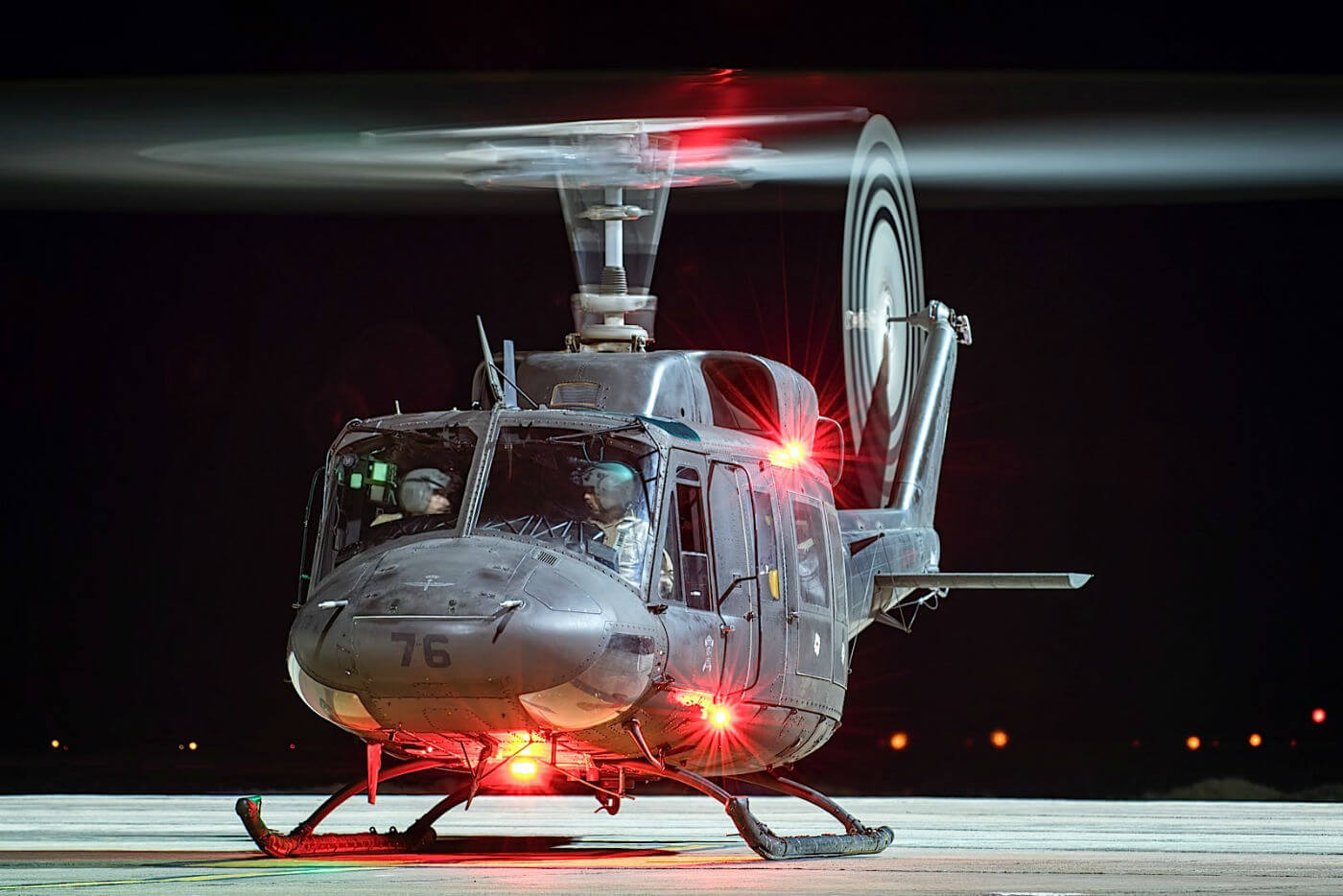The Batallón de Helicópteros de Maniobra VI is, for obvious reasons, more commonly known as BHELMA VI. Translating as the 6th Maneuver Helicopter Battalion, the unit is the only element of the Spanish military aviation based in the Canary Islands, a volcanic archipelago off the coast of northwestern Africa.

Originally formed in Madrid in 1986 with MBB BO-105s, the unit equipped with the Agusta-Bell 212 in 1988. Five years later, BHELMA VI moved to its present base at the airport on the island of Tenerife, operating a mixed fleet of AB212s and 205s. In 2011, the unit added the Eurocopter (now Airbus Helicopters) AS332 B Super Puma to its inventory, and operated all three types before retiring the 205s in January this year, leaving it with three Super Pumas and five 212s.
The unit has seen service in Lebanon, Bosnia and more recently in Afghanistan, where it integrated into the Fuerzas Aeromóviles del Ejército de Tierra (FAMET) or Army Air Mobile Force, and operated the AS532 Cougar in the troop transport role.
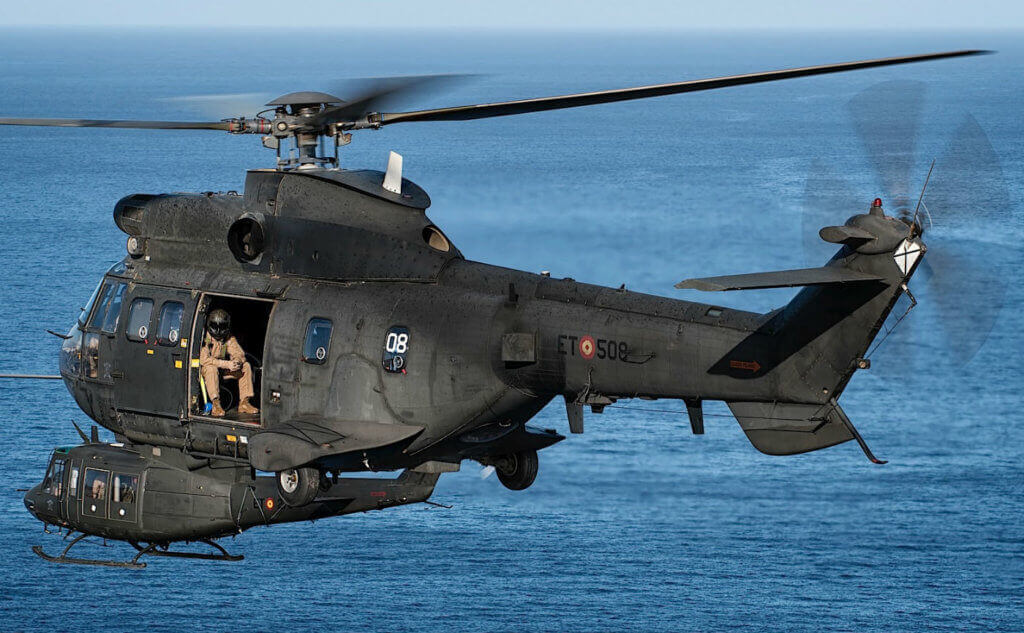
In June of this year, Vertical traveled to the island of Lanzarote to witness Exercise Famara, which is the largest exercise that BHELMA VI takes part in. While the exercise provides the opportunity for crews to fly outside of the restrictions of their home island, the focus is actually on the tactical planning prior to takeoff, as Lt.Col Alberto Tomás Quero Fernández de Tejada explained.
“We have very restricted flights in Tenerife, meaning we are limited with areas that we can use, therefore crews become familiar with the routes and training,” he said. “The aim of this exercise is centered around the planning and briefing stages, as I know that in these good conditions the crews can execute their mission perfectly. We want to focus on potential threats in the planning stage, and find solutions.”

BHELMA VI brought both their 212s and Super Pumas with them to Lanzarote. It’s unusual to find a single military flying unit that is equipped with two types of such fundamentally different aircraft — even the rotor heads turn in different directions, and there’s no meaningful parts commonality, posing a considerable logistical burden. Adding to the complications, most crews are trained only on one aircraft type, with only more experienced pilots being multi-type qualified.
For all their differences, both aircraft have similar capabilities and mission role sets, and flying mixed formations is common. Lt.Col Quero pointed out that each airframe presents different tactical opportunities. “Each aircraft has its own merits,” he said. “For example, the AS332, whilst less maneuverable than the 212, can lift more weight and is faster in the cruise. However, the 212 flies better tactically and can get lower to the ground.”
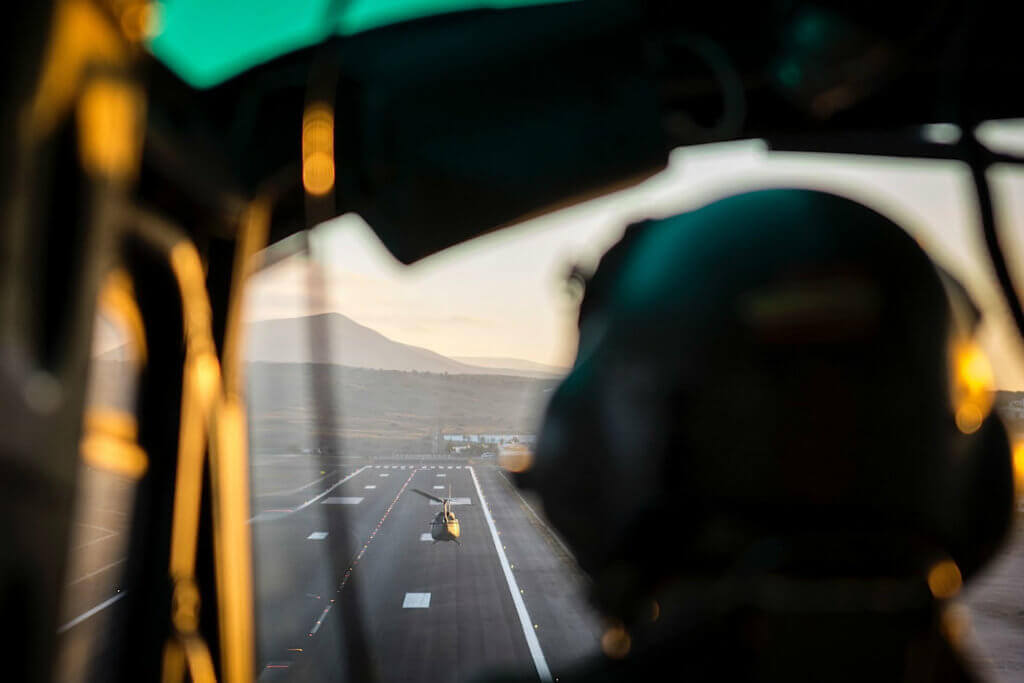
During Exercise Famara the differing tactical employment of the two types was demonstrated, with the 212s equipped with two MG-42 machine guns flying escort for the larger and slightly more cumbersome AS332s. These MG-42s are direct descendants of the infamous German Second World War weapon of the same name, and are still just as effective, providing high rates of fire out to a maximum effective range of one kilometer.
During the exercise itself, the majority of sorties involved formations of up to five aircraft carrying out troop insertions and extractions. As well as giving the crews an opportunity to operate alongside each other in relatively large formations, it also allowed them to conduct live weapon firing and train for secondary mission sets such as reconnaissance.
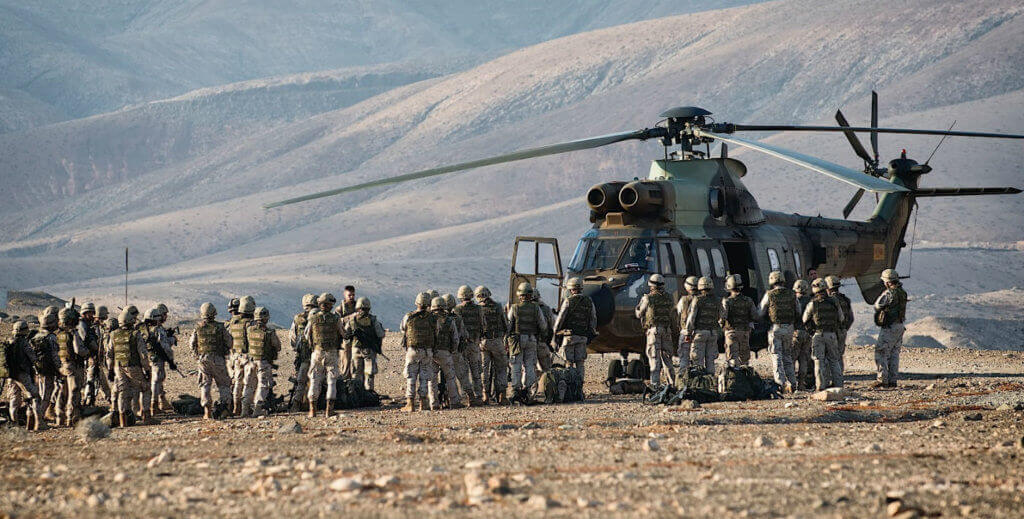
Lt. Tomás Azccona Lequerica described one such training mission, in which his flight was tasked with coordinating the detection, observation and eventual disruption of suspected planting of improvised explosive devices (IEDs).
“For this we flew in a five-ship formation, three 212s and two AS332s, going to one side of the area in a large formation before splitting up into two formations and flying at low altitude to find the high-value target on a road,” he said. “Once we had observed the occupants get out of the car and start planting IEDs, we cleared in the simulated attack helicopters to neutralize the threat.
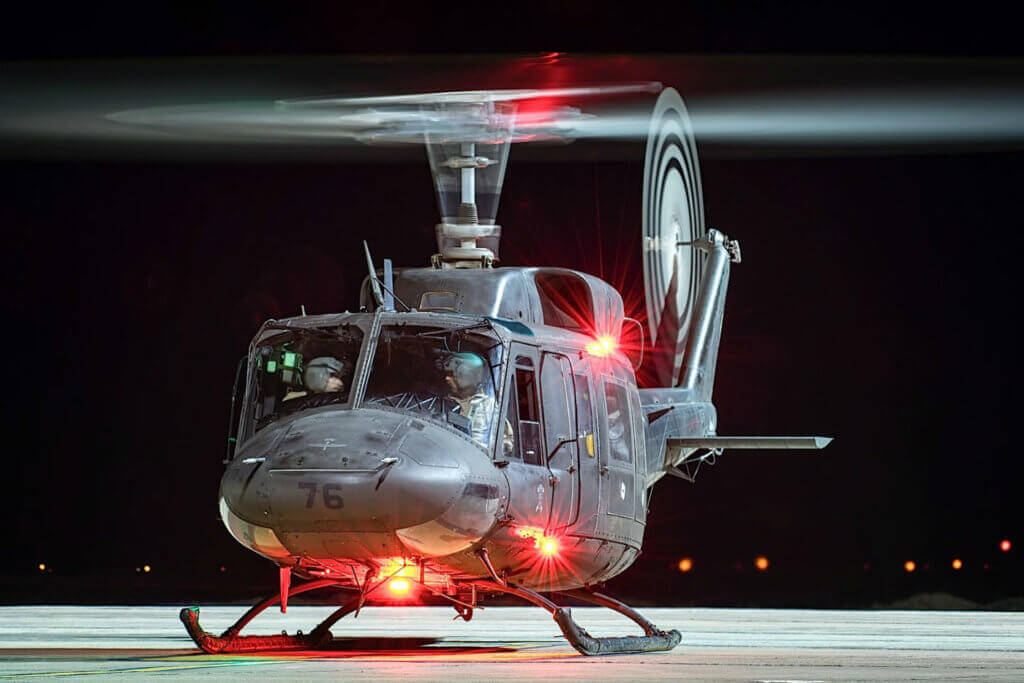
“Recce missions aren’t our usual mission role set; however, it was valuable training for us, especially [maintaining] correct discipline over the radios.”
BHELMA VI takes part in various other training exercises during the year, but none with the complexity or variety that they are able to achieve in Lanzarote. Lt.Col Quero was grateful for the opportunity to put his men to the test, saying after the final mission, “I’m very happy with the crew’s performance in what has been a demanding week.”
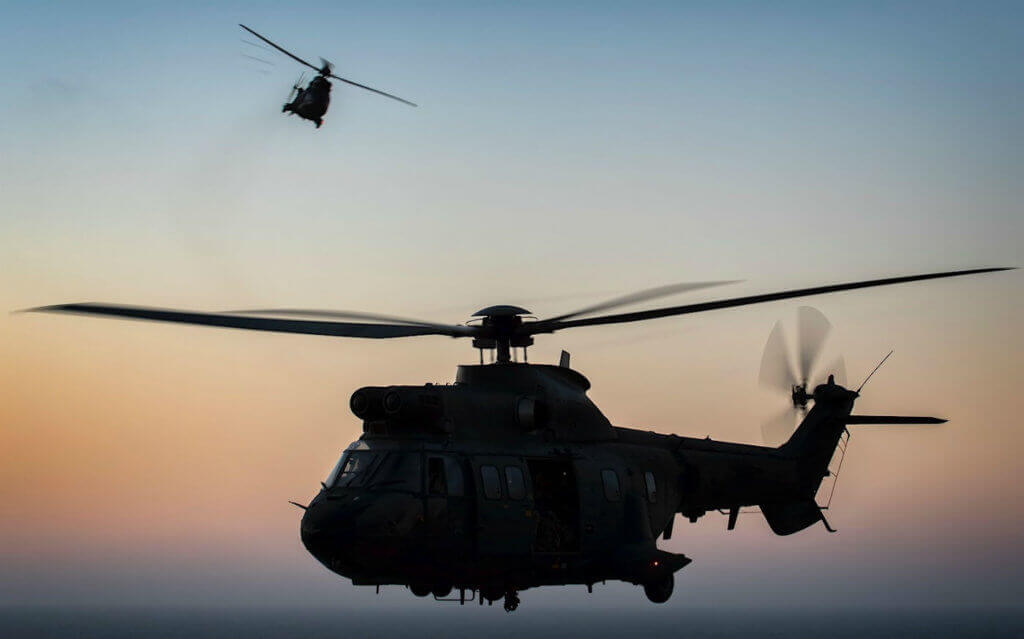
With Exercise Famara set to continue in the coming years, Quero said he plans to include more units in the future, with support from Boeing CH-47 Chinooks and Airbus H665 Tiger attack helicopters.





